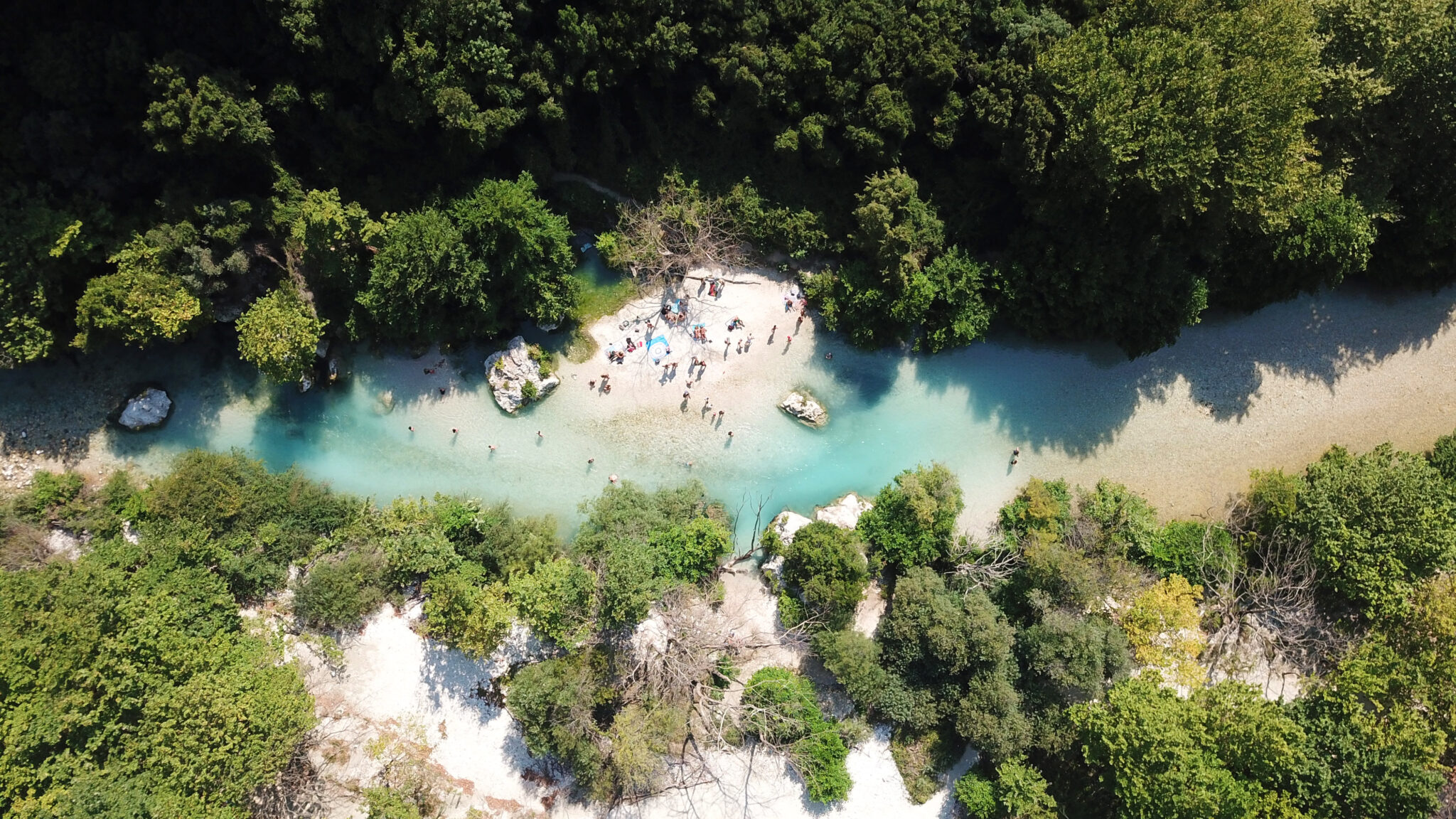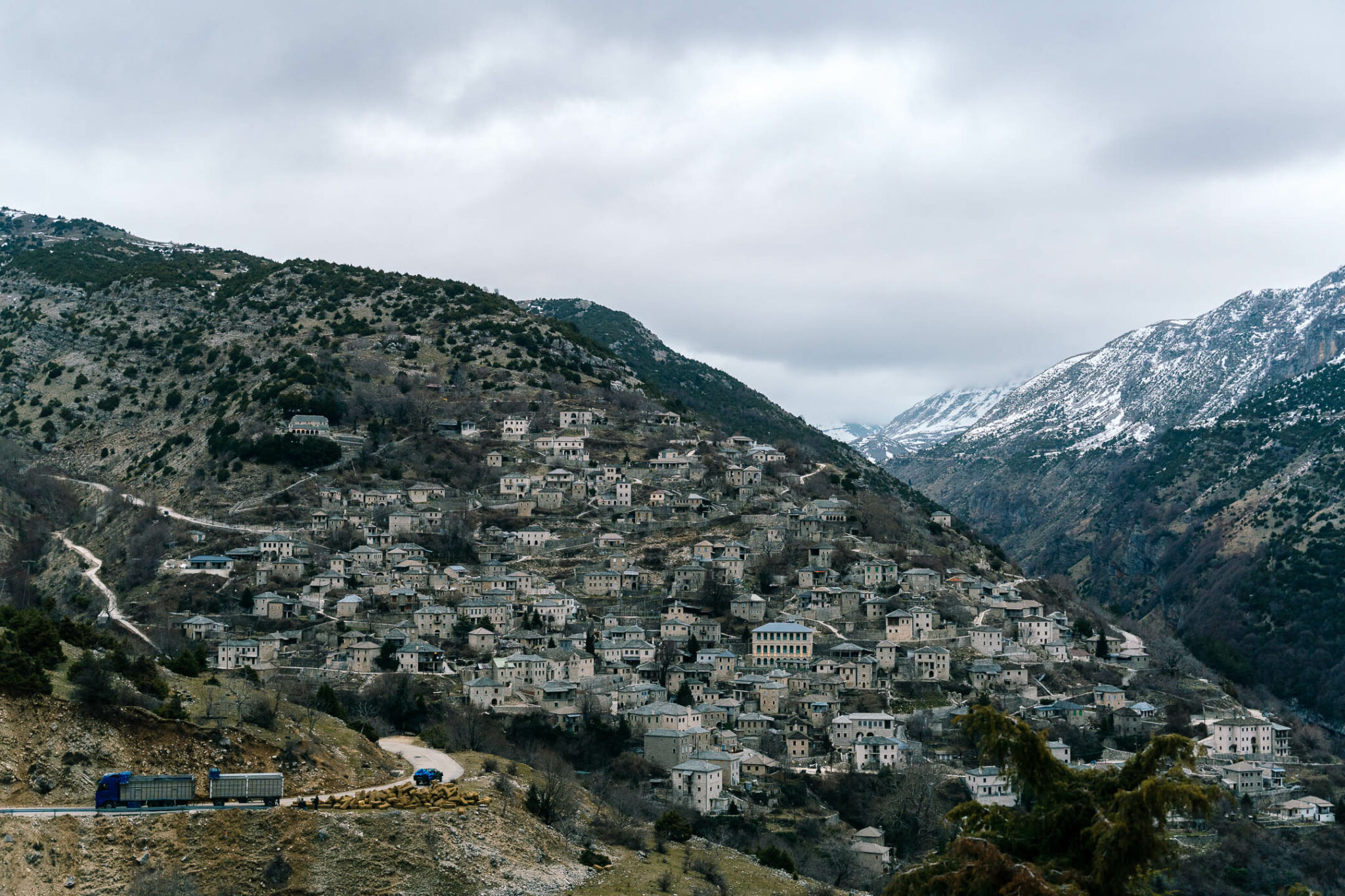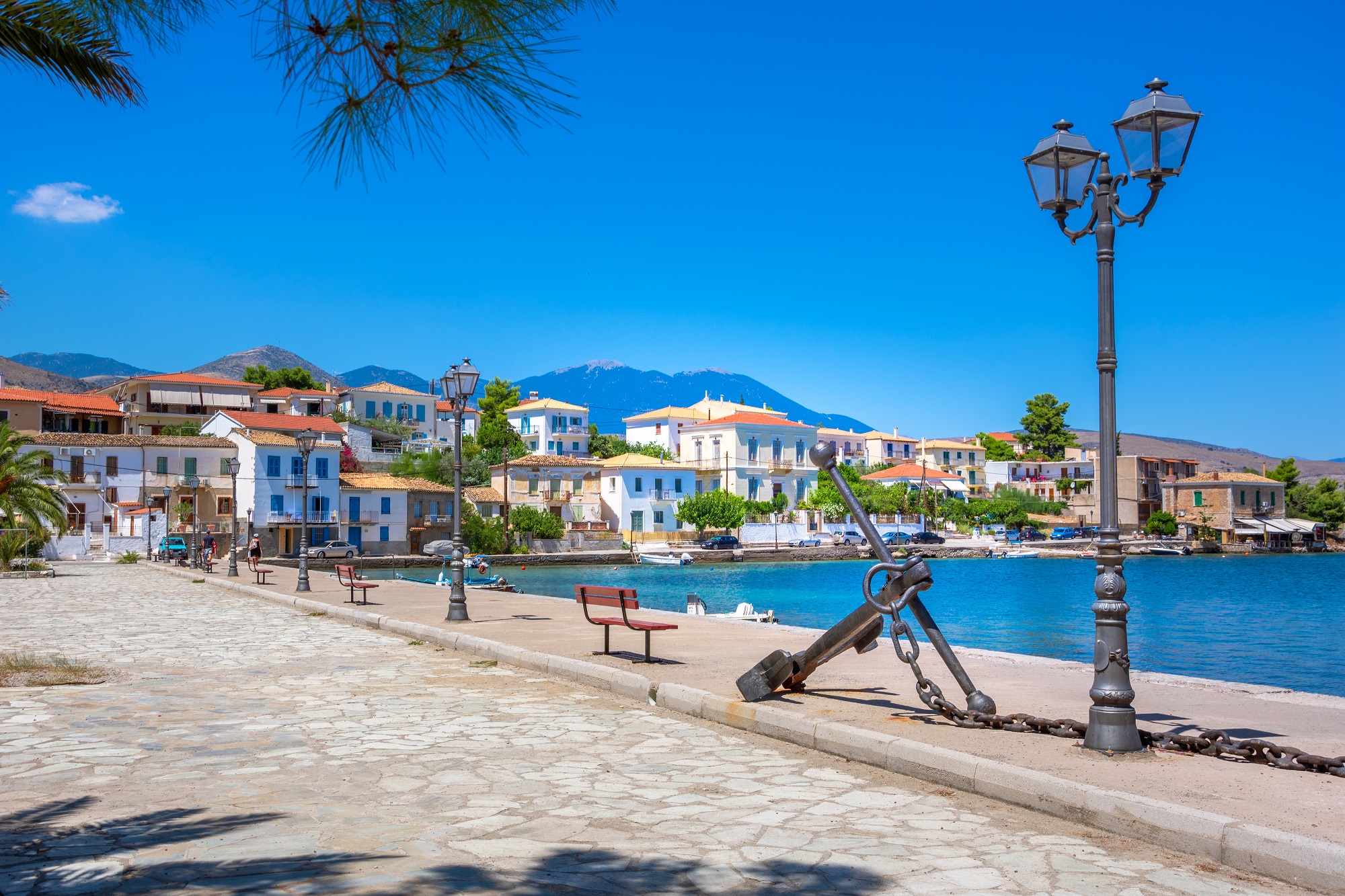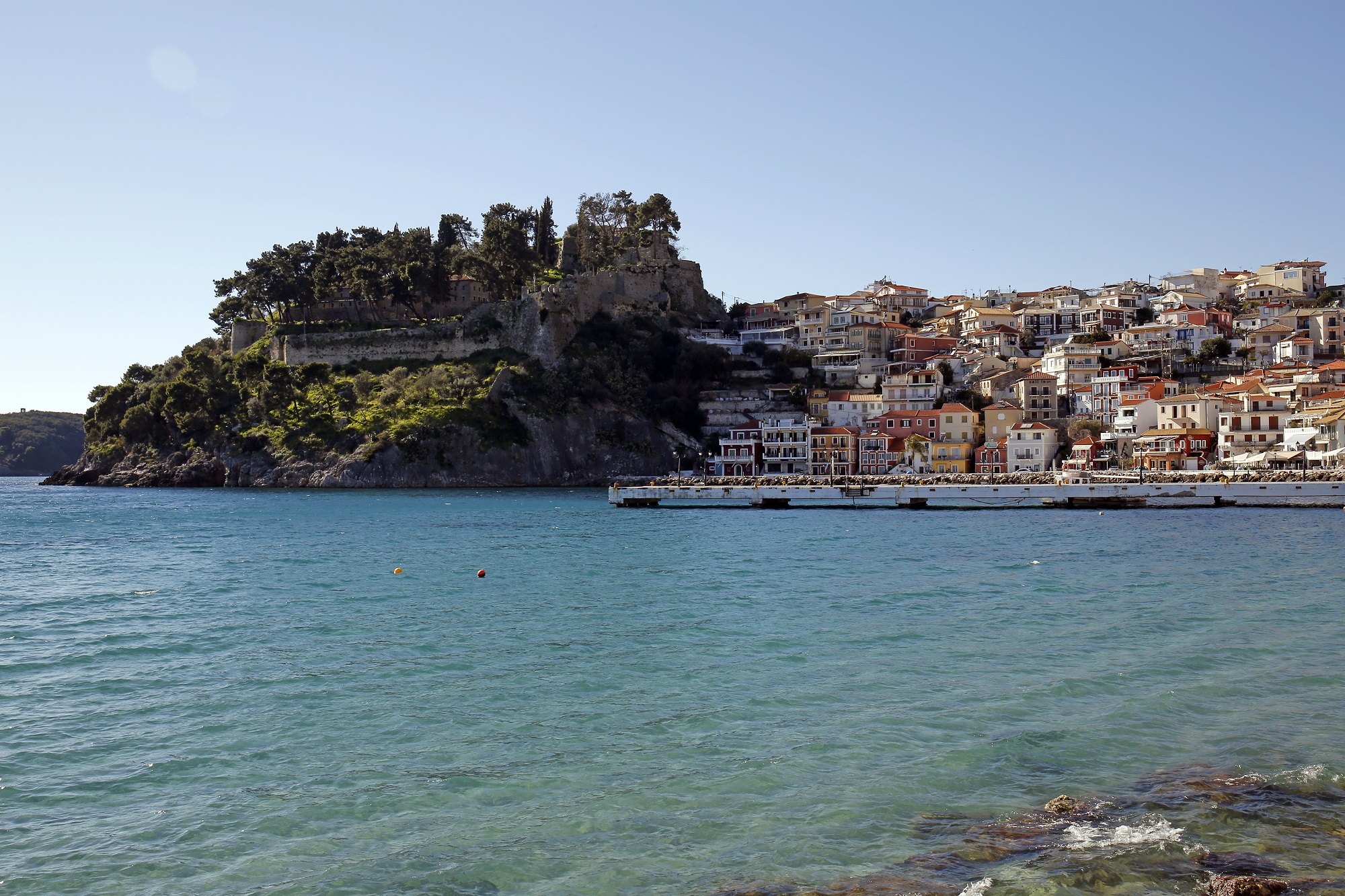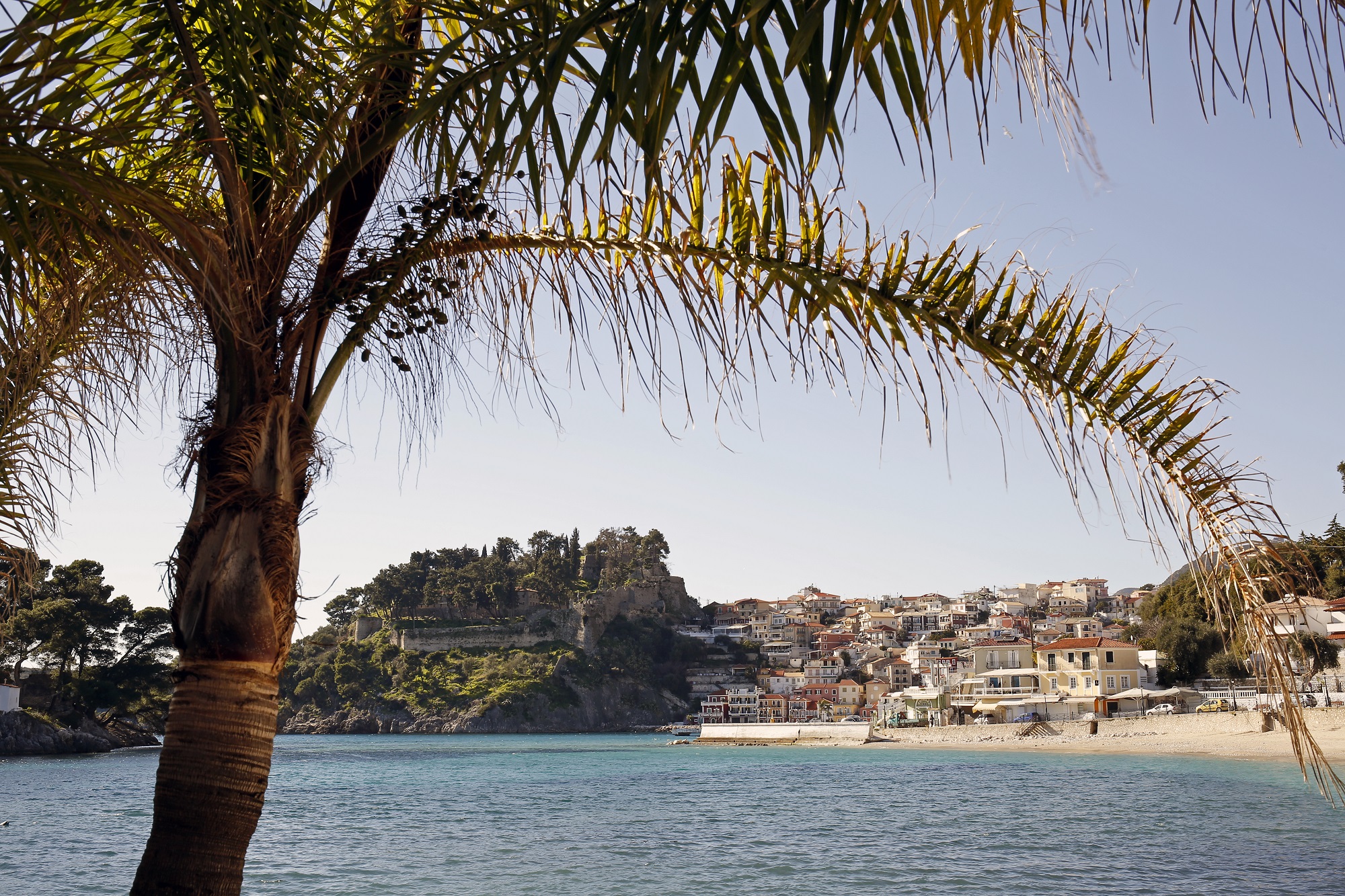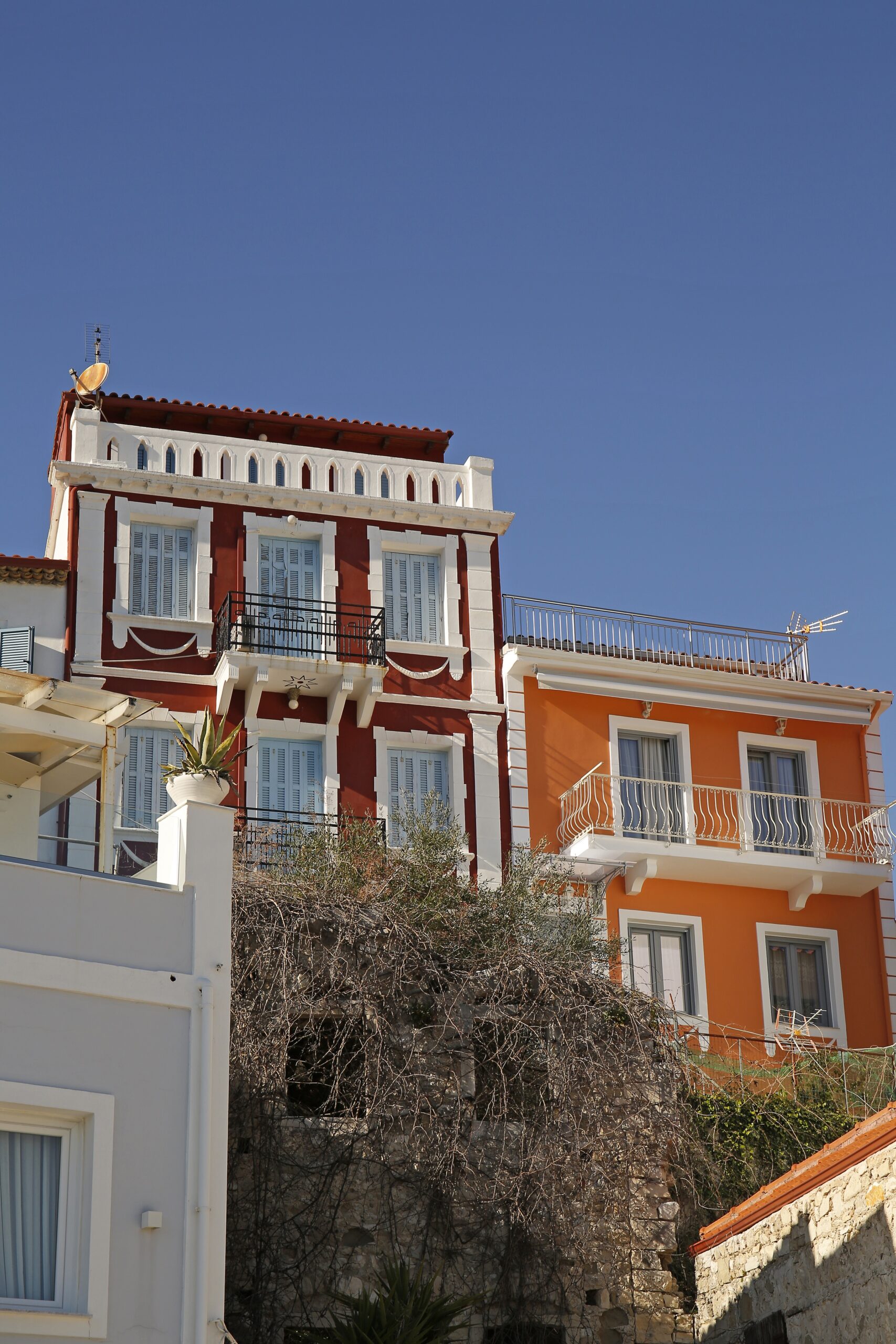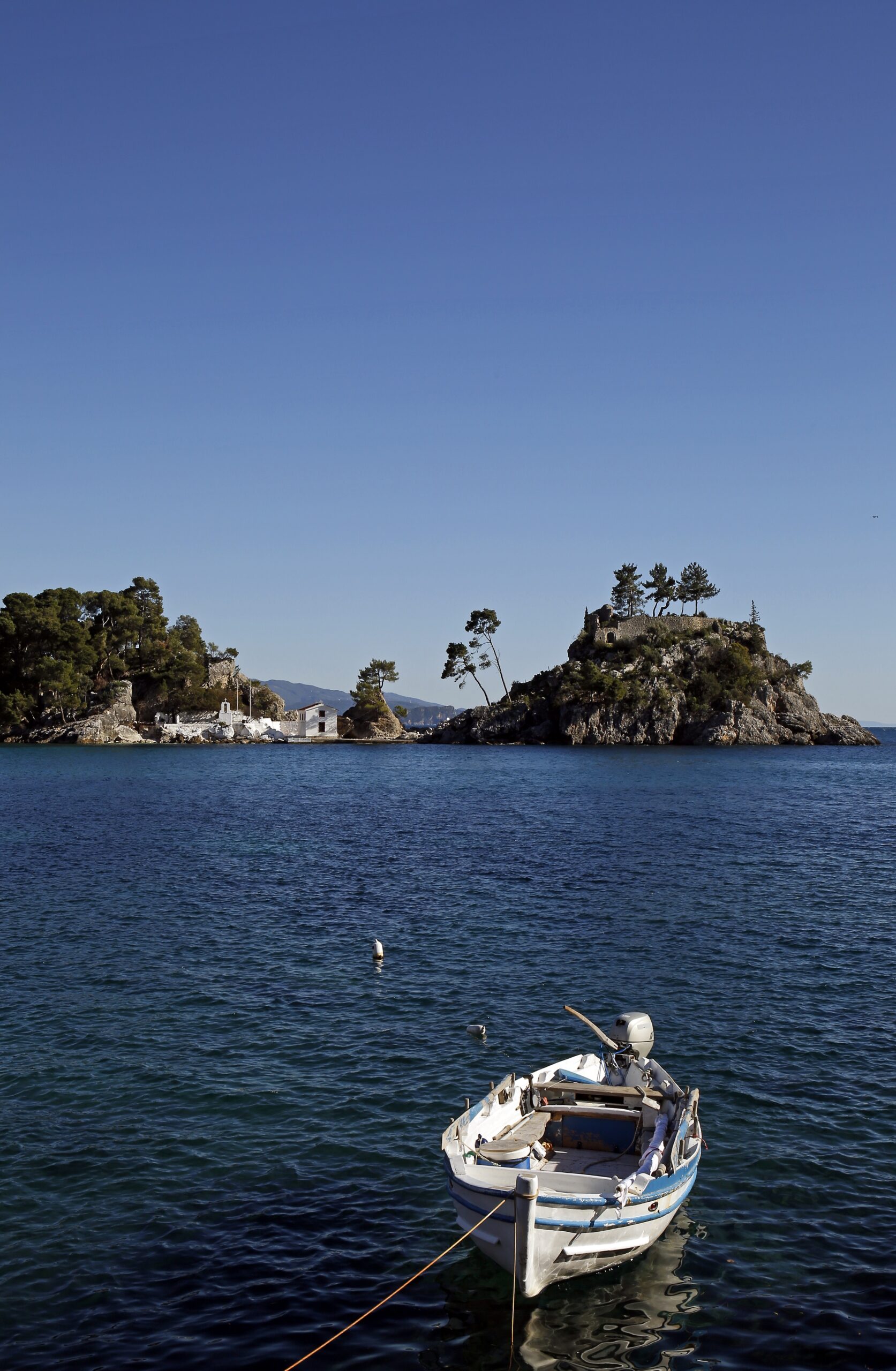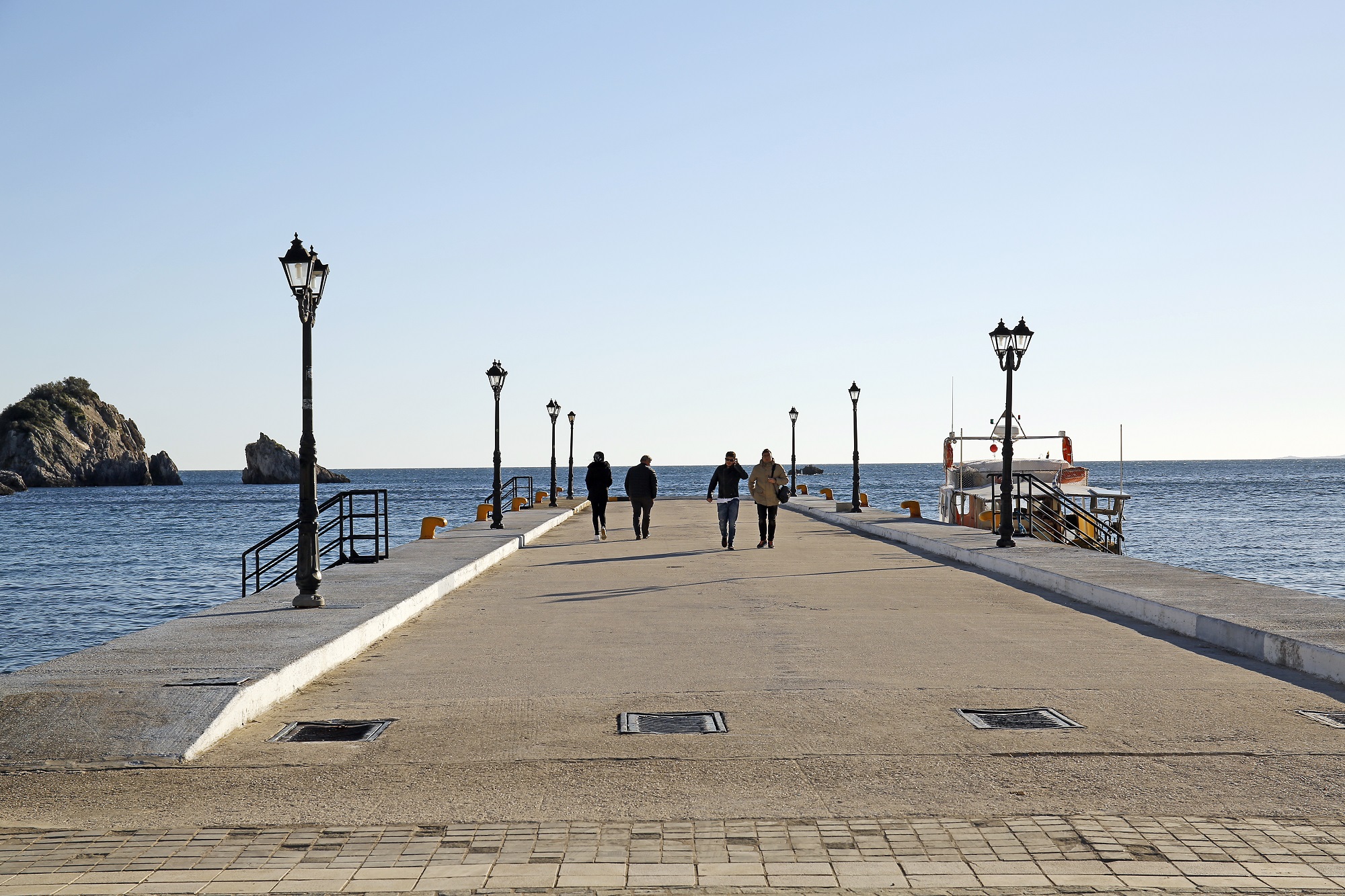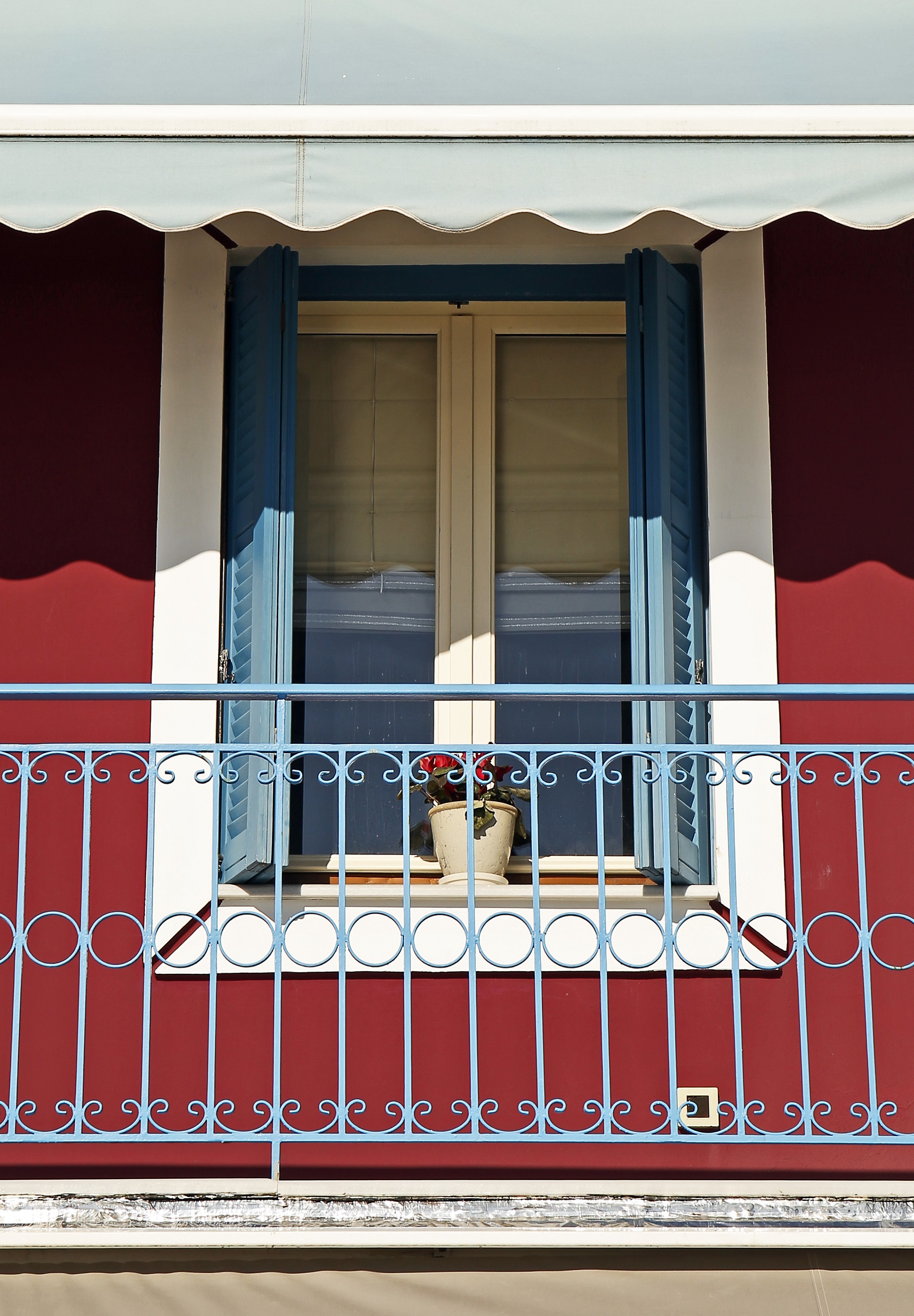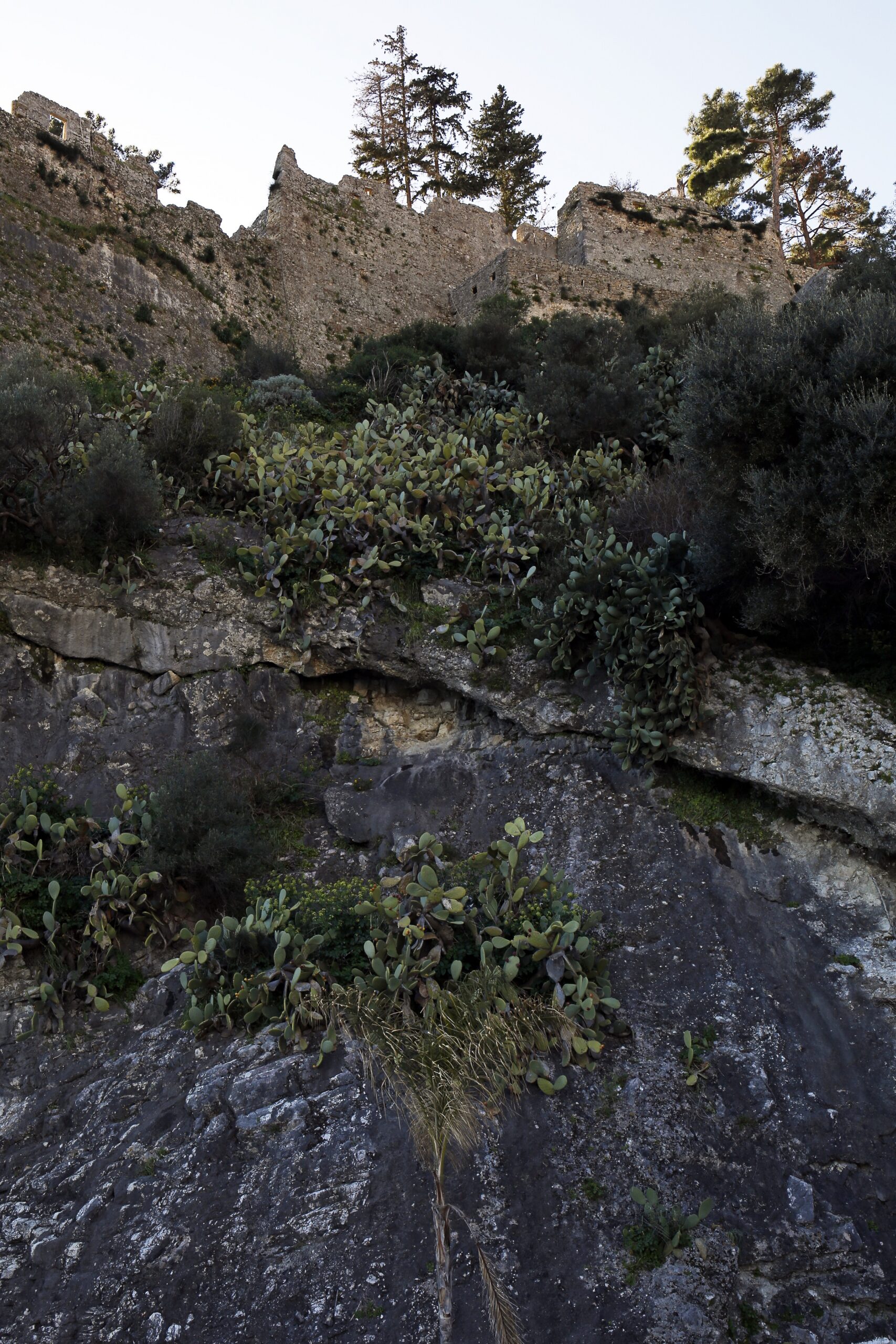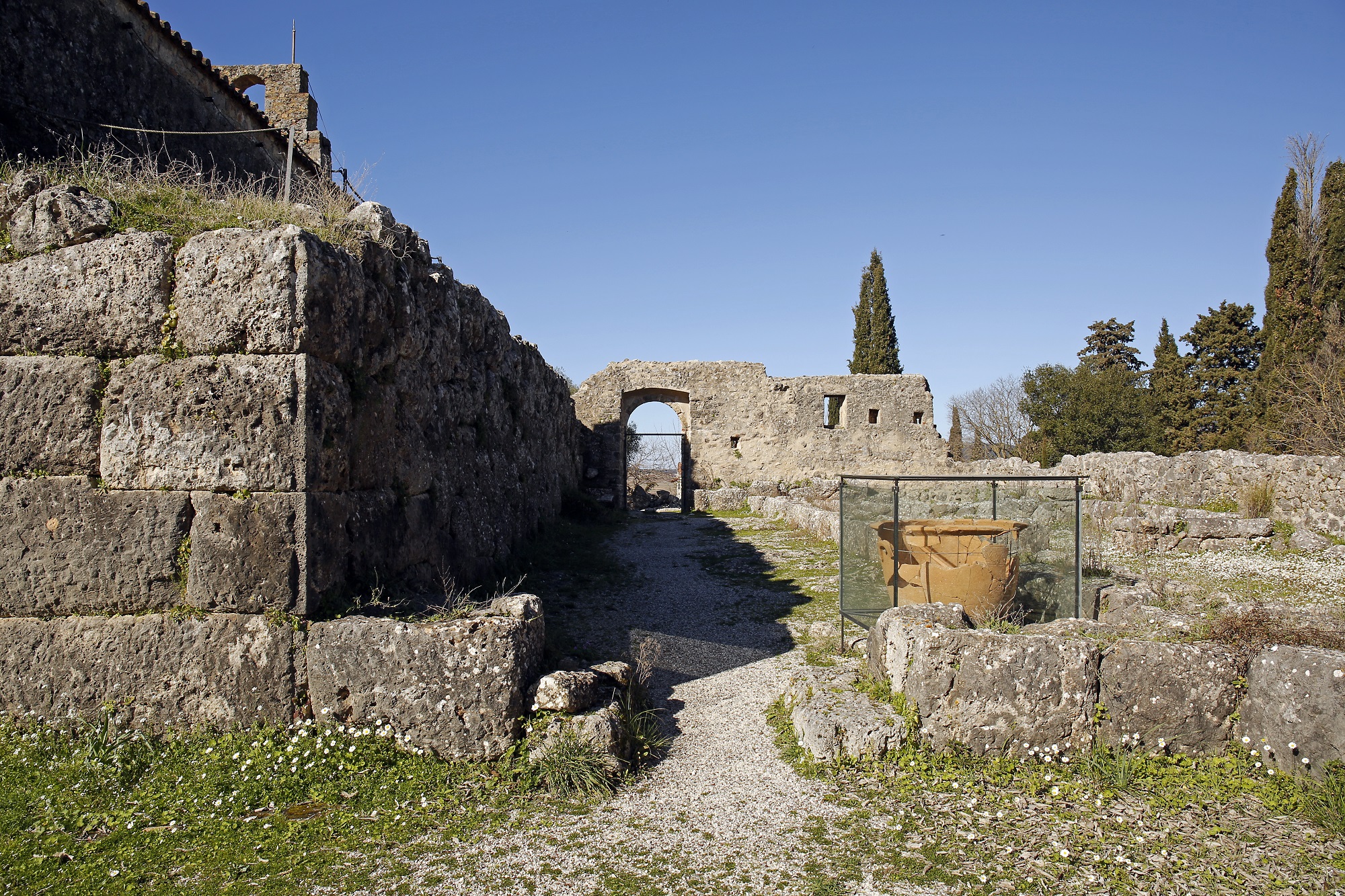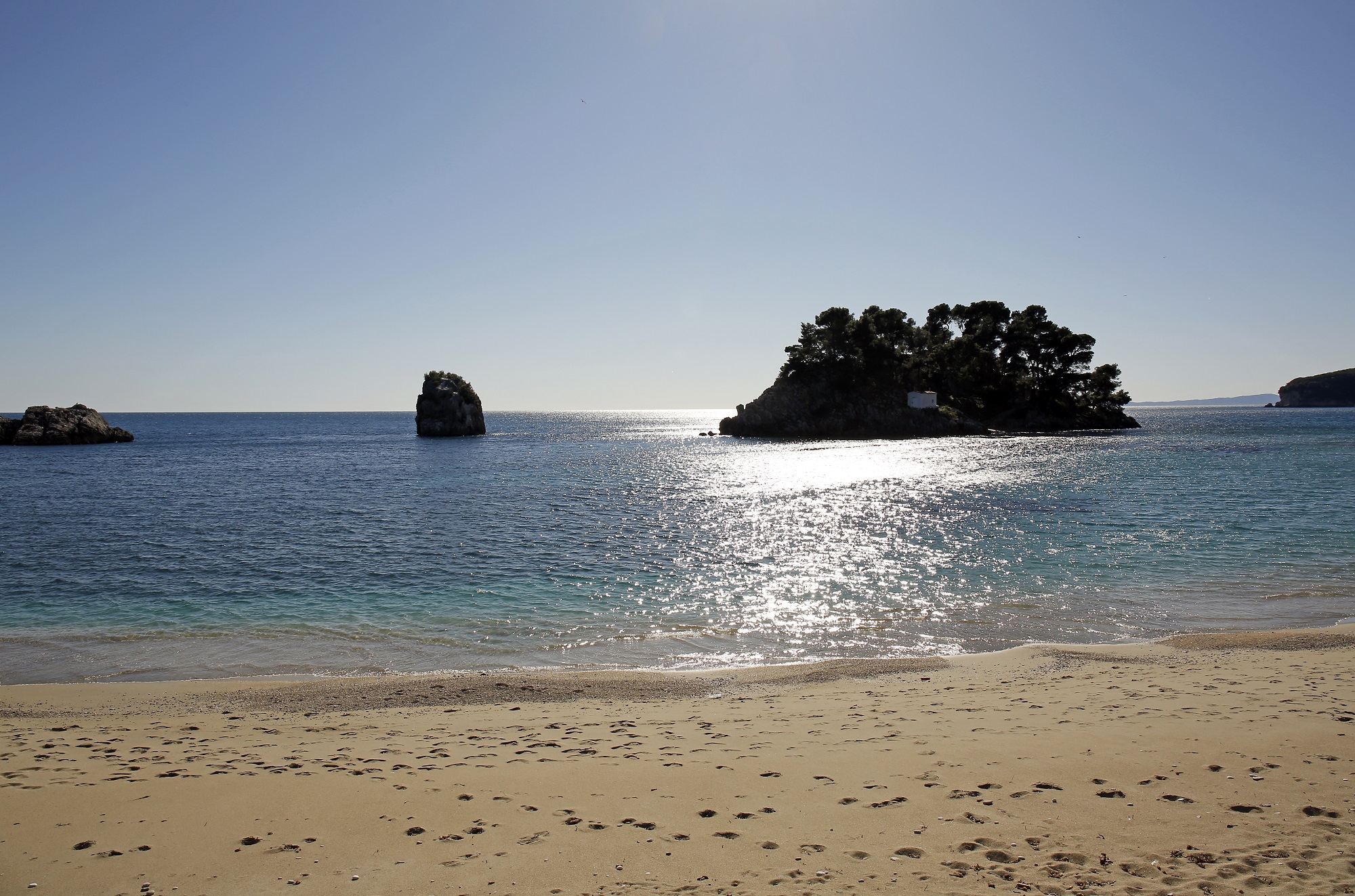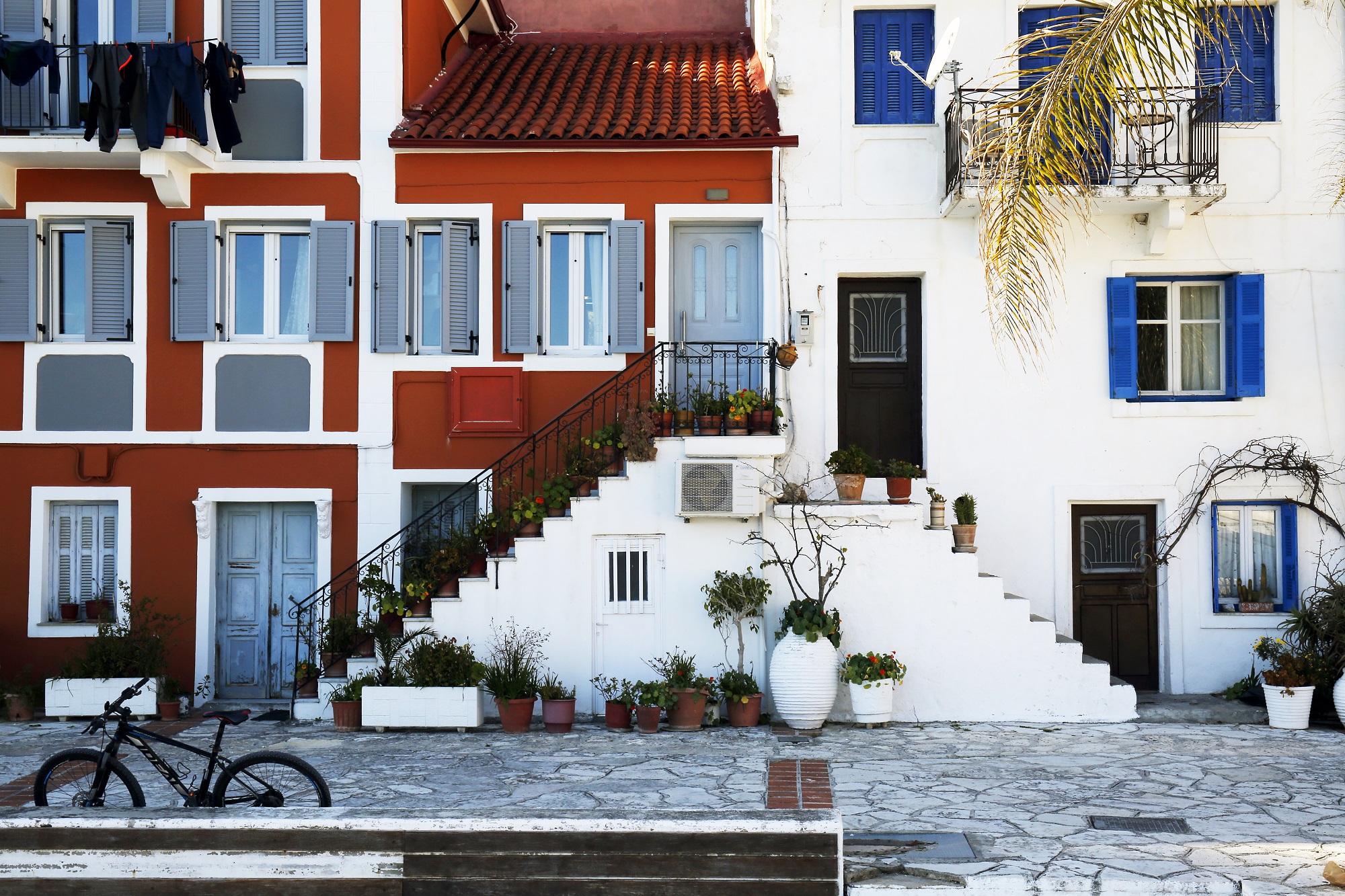Parga’s natural beauty is truly impressive, which is why first-time visitors are left speechless upon arrival.
The town is built amphitheatrically, on a hill covered with olive groves, around a closed bay that opens to the blue Ionian Sea, overlooking the islands of Paxos and Antipaxos. A stone’s throw from the beach of Parga, meanwhile, is the green islet of Panagia with the homonymous church and some Venetian buildings.
At the top of a fortified hill-acropolis that separates the port from the adjacent beach of Valtos stands the Venetian Castle, as a reminder of the area’ s long history. Venetian rule began in 1401 and lasted until 1797, when the Venetian Republic was dissolved by Napoleon. The castle of Parga survived, however, until 1819, when the city was sold by the English, its last western conquerors, to Ali Pasha of Ioannina.
The inhabitants of Parga, however, could not endure the Ottoman rule. About 4,000 people left their homeland for Corfu, taking with them the bones of their ancestors and sacks filled with earth from their land. In 1913, Epirus was liberated and annexed to Greece, whereupon many of them returned, a century after their voluntary emigration.
The close relations with the Ionian Islands and the direct influence of the Venetians are still evident in the architecture. Colourful two-storey mansions next to folk houses, narrow cobbled streets, arches, arched doorways and neighbourhoods with hidden courtyards full of flowers give the town its charm and shape its irresistible landscape.
The crown jewel of the Epirus Riviera
In constant development, Parga’s infrastructure gives everyone the opportunity to choose the accommodation that suits them, depending on their budget and their schedule: either four-star hotels, elegant apartment complexes or a luxury resort just 3 km away. Many establishments are being renovated, including rental rooms, which, although they do not play a leading role, still hold a special place in the hospitality fabric.
In once discredited villages a stone’s throw from the town centre – such as Anthousa and Trikorfo – nice villas are now being built, most of them with swimming pools, mainly for international visitors. Besides, Scandinavians, Dutch, English, Italians and Cypriots are particularly fond of Parga, while Israelis also choose the jewel of the Epirus Riviera for its turquoise waters and sandy beaches after visiting the Synagogue of Ioannina.
In an enviable tourist season that lasts 6 months, from Easter to October, the Greeks who flock to beautiful Parga almost unanimously vote for summer. Especially in August, the town easily rivals Mykonos and Santorini in terms of crowds, vibrancy and fun. Another advantage is that in recent years it has become a wedding destination for Greeks and foreigners alike. On the island of Panagia, of course, it is quite difficult to find a date to have a wedding.
The gastronomic experience is multi-dimensional, as you would expect from a place with such a developed tourism industry. Lots of fish taverns (it is a seaside town after all), several gourmet restaurants, sushi bars, burger joints, Italian restaurants, souvlaki and street food outlets. In some places you will also find elaborate wine lists. Perhaps wine-literate visitors (a growing number) have played a part in this.
Where to go – What to see
Chock-full of cafés, restaurants and bars along with the characteristic crimson Villa Rossa – a tobacco merchant’s mansion built in 1903 that now serves as a hotel – Parga’s promenade is a key reference point. During the low season, the coastal front of the town is immersed in sheer romance. However, in summer, it is hard to tell whether you are in Parga or Cannes because of the crowds, the incessant hustle and bustle and the bustling nightlife.
The climax of the revelry takes place every August 15th, with the revival of the Varkarola custom during which two rows of boats decorated with Venetian lanterns arrive at the port, starting from the Castle and Pavloukes, amid fireworks and general merriment. The Varkarola represents the return of the inhabitants of Parga from Corfu, together with the remains of their ancestors (as mentioned above), after the sale of the town to Ali Pasha.
A visit to the Venetian Castle and the Saitan Pazar (Satan’s market) will introduce you to the secrets of Parga. Starting from the port, winding through narrow streets, a picturesque route will lead you to the arched gate of the Castle, which bears the emblem of the winged dragon of Agios Markos and Ali Pasha. Along the way you will browse through shops, quaint little houses and courtyards.
In the atmospheric interior of the Castle you will see ruins of the old town, including nine churches, streets, houses still in good condition, two large two-storey barracks and the inner Acropolis of Ali Pasha. Enjoy an afternoon coffee in the cafeteria inside the Venetian castle, under the pine trees, with stunning views of the harbour, the islet of Panagia, the traditional settlement, the island of Paxos and the Ionian Sea. Bask in the glorious sunset and then head into town for some fun. Just note that the castle remains closed in winter.
On a hill above the village of the same name, opposite Parga, stands the impressive castle of Anthousa, which was built in 1814 by Ali Pasha. It is proof of how much this powerful man was interested in controlling the town with its impregnable Venetian fortress, a fact that finally prompted him to make a sale offer to its English overlords (1819). From Anthousa starts the path with the watermills that leads to the beach of Valtos. It is a wonderful two-hour walk under plane trees and beside streaming water, which you can also do by train starting from Kryoneri – the main beach of Parga.
The Necromancy of Acheron
Located 25 km from Parga, at the point where the rivers Acheron, Kokytos and Pyrifleghethontas, next to lake Acherousia, lies the most famed necromancy of Ancient Greece, namely the necromancy of Acheron. According to Homer, the necromancy was located near the gates to the Underworld realm, the kingdom of dreaded Hades.
There the living would meet the souls of the dead, who had acquired the ability to predict the future. Today, the basement where the oracles were made is still there, echoing the whispers of the dead for anyone willing to listen.
From the village of Ammoudia you can reach the mouth of Acheron by boat. It is a delightful ride, which you can then combine with a meal at the taverns on the banks of the river.
The Zalongo Monument
Located on Mount Zalongo, the monument of Zalongo is a monumental, 786 meters high sculpture created by celebrated Greek sculptor George Zongolopoulos, full of symbolism. It was created in honour of the women of Souli, who, trapped here in December 1803, preferred death by dancing off the cliff with their children rather than falling into the hands of Ali Pasha’s troops.
In the legendary villages of Souli, in a rugged and almost deserted place in the mountains of Epirus, one can almost feel the harsh intensity of the lives of its people, who were subsequently associated with the 1821 Revolution.
The place retains all its austere, warlike atmosphere, but combined with a kind of spirituality that overwhelms you. It is worth visiting the brilliantly reconstructed house of the warlord Lambros Tzavellas and eating and/or staying at the “Guest-house of Souli” (+30 698 787 8251).
Parga’s beaches
The beaches of Parga will blow you away. First of all, you can swim to the islet of Panagia – and if you’re too tired, you can rent a pedal boat. In town, especially if you have kids, you can swim at Kryoneri or Piso Kryoneri for more peace and quiet. Very close to the centre of Parga, just behind the Castle, lies the long beach of Valtos with buzzing atmosphere, music and everything you need to have a good time: cafés, restaurants, bars.
The wonderful beach of Lychnos with its famous sea caves is just 3 km away, in the picturesque village of the same name. And it is sure to enchant you. At a distance of 6.5 km outside Parga, the unparalleled beauty of the “hidden” beach of Ai Giannakis, whose turquoise waters are always protected from the wind, awaits you. Sarakiniko, 12 km away, is also enchanting, thanks to its fine sand and crystal blue waters. Note, however, a tip for a different experience: just one kilometre from Sarakiniko you will find the beach of Agios Sostis. Deserted, inaccessible on foot, it is best suited for the most adventurous souls.
The main advantage of Parga is also the opportunities it offers for sea trips and visits to the surrounding Ionian islands. Every day in summer, boats depart for the beaches of Valtos, Lychnos and Sarakiniko, while there is also a ferry connection to Paxos and Antipaxos (ideal for day trips), as well as a connection to Corfu once a week. At the same time, sailing boat rental companies provide boats with or without a skipper for long sea excursions to dream spots, which are not accessible from land.
Finally, nestled in a closed bay just half an hour away from Parga, the seaside village of Sivota boasts turquoise waters, caves and heavenly beaches, some of which (Bella Vraka, Alonaki) are reminiscent of the Caribbean. You will also be amazed by the islands of Mavro Oros, Agios Nikolaos – with the stunning beach of Pisina – and Mourteno, which can be reached by walking along a strip of sand in the shallow waters. Cosmopolitan beach bars, restaurants and tavernas complete the profile of a vibrant evening in the surrounding area.
Read also:
The eerie red hills of Preveza, Greece
Lakes, rivers, waterfalls: Swimming among the magnificent mountains of Greece
Kastri hill: The best-preserved ancient settlement in Greece



